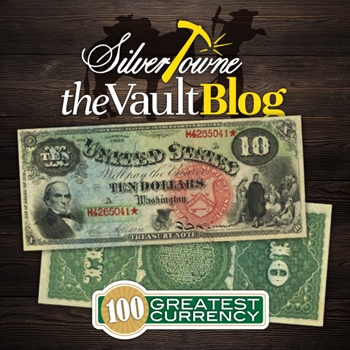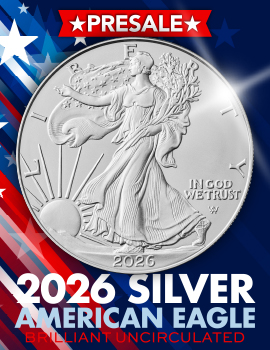
It seems as if currency more than any other numismatic product has nicknames for certain notes that end up sticking with the original more than its actual introductory title. That is especially the case with our next entry in the 100 Greatest American Currency Notes blog series covering the Whitman Publishing series. Authors Q. David Bowers and David M. Sundman helped us navigate not only how it received its popular nickname, but the other design features that made it a part of the top 100 list.
#71 - Series of 1869 to 1880 $10 Legal Tender “Jackass Note”
The popularity of the $10 Legal Tender “Jackass Note” stems from a very simple reasoning: the eagle at the very bottom center of the face appears to look like the head of a donkey when turned upside down. As a series whole, the 1869 F-96 is the truest of the Rainbow Note denominations as the series following are much less colorful and showcase a different back design. For F-96 through issues 113, there are approximately 4,200 to 5,600 known.
On the face of the Jackass Note is Daniel Webster, a New Hampshire native that practiced law and was a U.S. representative to Congress, a senator, and a secretary of state. However, his most notable work was under the title of orator. He was a part of the famous Webster v. Hayne debate that took place in the Senate in 1830 over the tariff. Featured on the left of the face of the $10 Legal Tender Jackass Note and used as a popular stock image on many different issues of notes, the right depicts Pocahontas being introduced to what appears to be Europeans of high importance. This particular motif has been named Introduction of the Old World to the New or Pocahontas Presented at Court.
This note in Choice Crisp Uncirculated condition in 1960 was valued at $175. By the publishing of this book in 2006, the note’s historical value climbed to $4,500







